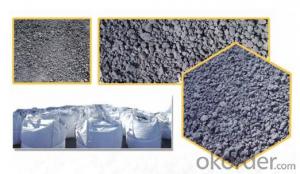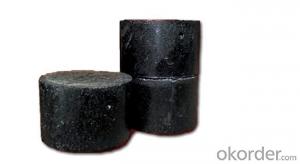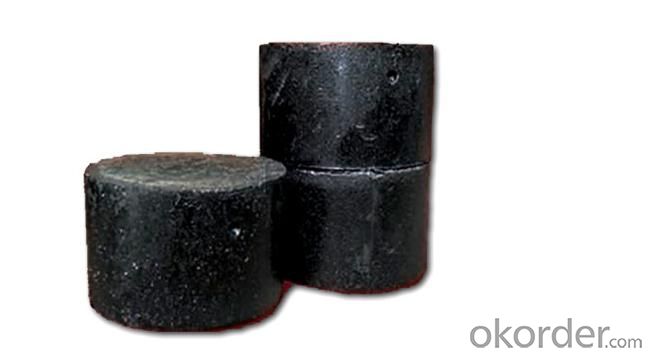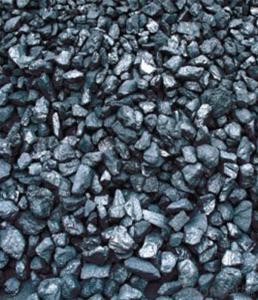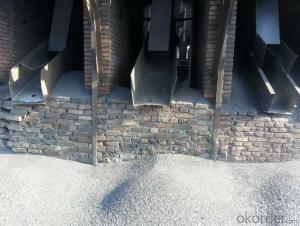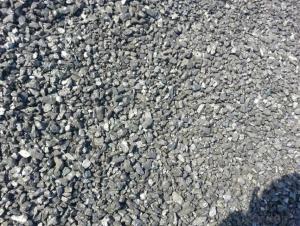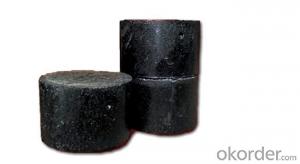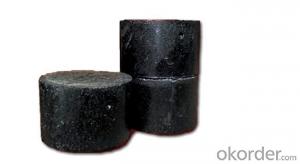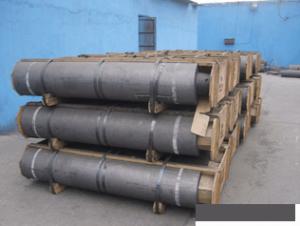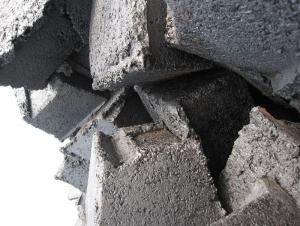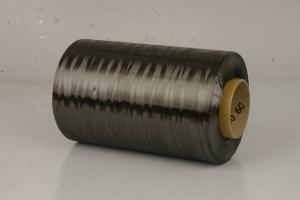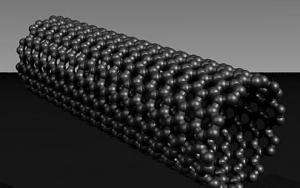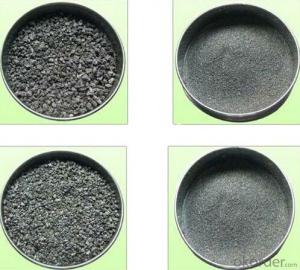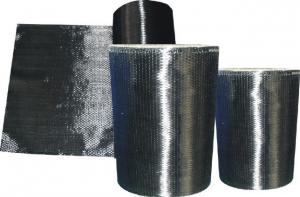cylinder Carbon Electrode Paste with different size
- Loading Port:
- Lianyungang
- Payment Terms:
- TT OR LC
- Min Order Qty:
- 20 m.t.
- Supply Capability:
- 800 m.t./month
OKorder Service Pledge
OKorder Financial Service
You Might Also Like
Spcifications
1:carbon eletrode paste
2:for ferroalloy,calcium carbide manufacture
3:HS 3801300000,YB/T5212-1996,ISO9001:2008
Product Description
Carbon Electrode Paste is a self-baking electrode used in submerged arc furnaces for delivering power to the charge mix. Electrode Paste is added to the top of the electrode column in either cylindrical or briquette form. As the paste moves down the electrode column the temperature increase causes the paste to melt and subsequently bake forming a block of electrically conductive carbon. Electrode Paste is essentially a mix of Electrically Calcined Anthracite (ECA) or Calcined Petroleum Coke (CPC) with Coal Tar Pitch.
Graphite/Carbon Electrode Paste Specification:
| PARAMETER UNIT GUARANTEE VALUE | ||||||
| Ash.( % ) | 4.0 max | 5.0 max | 6.0 max | 7.0 max | 9.0 max | 11.0 max |
| V.M (%) | 12.0-15.5 | 12.0-15.5 | 12.0-15.5 | 9.5-13.5 | 11.5-15.5 | 11.5-15.5 |
| Compress Strength. | 18.0 min | 17.0 min | 15.7 min | 19.6 min | 19.6 min | 19.6 min |
| Specific Resistance | 65 max | 68 max | 75 max | 80 max | 90 max | 90 max |
| Bulk Density | 1.38 min | 1.38 min | 1.38 min | 1.38 min | 1.38 min | 1.38 min |
Picture:
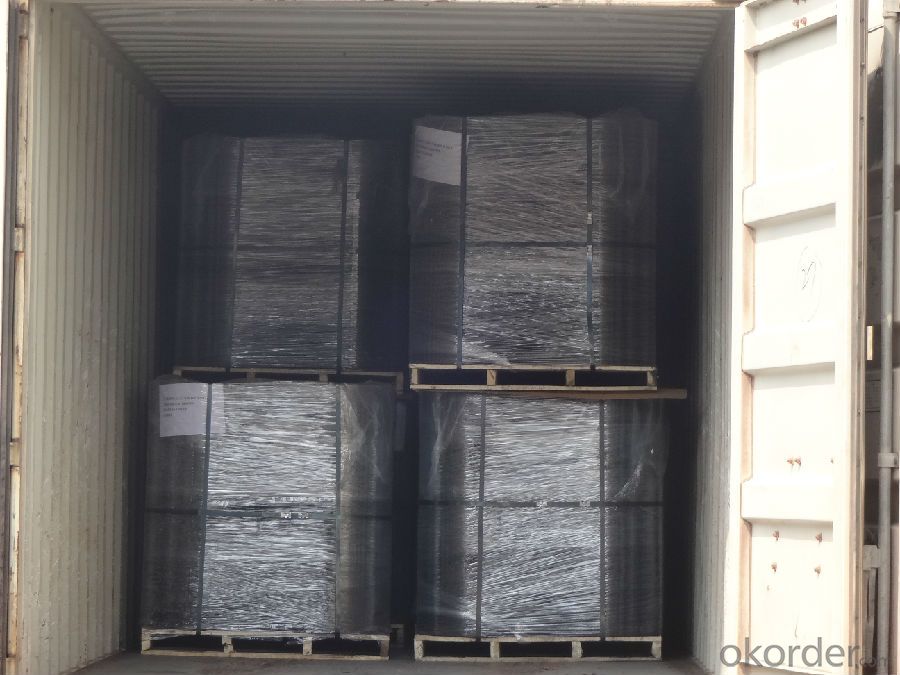
- Q: How does carbon affect the taste of food and beverages?
- Carbon can affect the taste of food and beverages by either enhancing or altering their flavor profiles. In the case of carbonated beverages, the added carbon dioxide creates a bubbly sensation, which can give a refreshing and lively mouthfeel. Carbonation also enhances the perception of acidity and can balance the sweetness in some drinks. On the other hand, when carbon-based compounds, such as those found in charred or grilled food, come into contact with heat, they can create smoky or burnt flavors that add depth and complexity to certain dishes. Overall, carbon plays a significant role in influencing the taste and sensory experience of various food and beverage products.
- Q: What are the effects of carbon emissions on the stability of volcanic regions?
- The stability of volcanic regions can be influenced by both direct and indirect effects of carbon emissions. At first glance, the direct impact of carbon emissions on volcanic areas seems relatively insignificant. Volcanic eruptions naturally release carbon dioxide (CO2), so the additional emissions from human activities may not have a significant individual effect on the stability of volcanic regions. However, the increased levels of carbon dioxide in the atmosphere can contribute to climate change, which can indirectly affect volcanic activity. Indirectly, the stability of volcanic regions can be affected by climate change resulting from carbon emissions. The rising global temperatures caused by climate change can lead to the melting of glaciers and ice caps. This, in turn, increases the amount of water on the Earth's surface. The additional weight of water in volcanic areas can potentially add pressure to magma chambers and trigger volcanic activity. Moreover, the increased water levels can result in higher levels of rainfall, which increases the risk of landslides and erosion in volcanic regions, potentially destabilizing the area. Additionally, climate change can alter precipitation patterns and create drought conditions, impacting the hydrological cycle. These changes can affect the availability of water for volcanic regions, ultimately influencing their stability. Volcanoes require water for the production of steam and pressure that can lead to eruptions. If there is a lack of water due to prolonged drought conditions, volcanic activity may decrease. However, unpredictable rainfall patterns can result in an excess of water, leading to an increased risk of flash floods and landslides that can destabilize volcanic areas. It is important to acknowledge that the effects of carbon emissions on the stability of volcanic regions are intricate and can vary based on factors such as local geology, volcanic activity, and climate conditions. Although carbon emissions may not directly cause volcanic eruptions, they can contribute to changes in climate patterns that can indirectly impact the stability of volcanic systems. Further research and monitoring are necessary to fully comprehend and quantify these effects.
- Q: Glucose contains resveratrol (C14H12O3) to determine the mass ratio of resveratrol and carbon dioxide of the same quality as carbon dioxide
- They are x and y, containing carbon equal, according to the mass of an element = the mass of a compound * the elementMass fractionFor C14H12O3, the carbon mass fraction is C%=12*14/ (12*14+12+16*3) *100%=73.68%For CO2, the mass fraction of carbon is 12/ (12+16*2) =27.27%There is x *73.68%=y*27.27%So there's X: y =57:154
- Q: What are the uses of carbon nanotubes?
- Due to their unique properties, carbon nanotubes find wide application across various industries. In the realm of electronics and semiconductors, they are particularly valuable. With exceptional electrical conductivity, carbon nanotubes are ideal for creating smaller and more efficient electronic devices. They can be incorporated as conductive additives in polymers, resulting in materials with enhanced electrical and thermal properties. Another crucial domain where carbon nanotubes excel is materials science. Their exceptional mechanical strength and lightweight nature make them ideal for reinforcing and strengthening materials. By incorporating carbon nanotubes into composites, their mechanical properties can be improved, making them more durable. Furthermore, their usage in constructing super-strong fibers finds relevance in industries such as aerospace and construction. Carbon nanotubes have also found valuable applications in the medical field. They can be utilized in drug delivery systems, wherein drugs are encapsulated within the nanotube structure and directly delivered to specific cells or tissues. This method enables more effective and targeted drug delivery, minimizing the side effects associated with traditional drug administration methods. Additionally, carbon nanotubes are being explored as a potential material for biosensors, facilitating the early detection of diseases and pathogens. In the realm of energy storage, carbon nanotubes are being extensively researched as an alternative to conventional lithium-ion batteries. Their potential to store more energy and charge faster could revolutionize the field of energy storage and power generation. Additionally, carbon nanotubes can be employed as catalysts in fuel cells, enhancing their efficiency and cost-effectiveness. In summary, the applications of carbon nanotubes are vast and continue to expand as new discoveries are made. From electronics to materials science, medicine to energy storage, these nanotubes have the potential to revolutionize various industries and enhance the performance of existing technologies.
- Q: How do plants use carbon dioxide?
- Plants rely on photosynthesis, a crucial process for their survival, to utilize carbon dioxide. By means of small openings on their leaves called stomata, plants absorb carbon dioxide from the air. Inside the leaves, carbon dioxide reacts with water, obtained through root absorption, to generate glucose and oxygen. The plant utilizes glucose as an energy source for various metabolic activities and growth. Additionally, excess glucose is stored as starch for future requirements. Oxygen, on the other hand, is released into the atmosphere during photosynthesis, playing a vital role in the survival of countless organisms, including humans, who depend on it for respiration. Consequently, plants are indispensable for maintaining the equilibrium of carbon dioxide and oxygen in the atmosphere, making them vital for life on Earth.
- Q: What is carbon black dye?
- Carbon black dye is a type of dye that is derived from carbon black, which is a fine black powder made from the incomplete combustion of hydrocarbon materials. It is commonly used as a pigment and dye in various industries, including the manufacturing of ink, paint, rubber, plastics, and textiles. Carbon black dye is highly valued for its intense black color and excellent lightfastness, meaning it does not fade easily when exposed to sunlight or other sources of light. Due to its strong coloring properties, carbon black dye is also used to add depth and darkness to other colors, making them more vibrant and visually appealing. Additionally, carbon black dye is known for its good heat stability, chemical resistance, and electrical conductivity, making it suitable for a wide range of applications.
- Q: Why is the longer the carbon chain, the better the hydrophobic properties?
- Alkyl chains, low in polarity, insoluble in water...... Release53 (TA station) of all alkanes alkane chain containing even chemical bonds are sigma bond, charge distribution in the molecule is not very uniform, the movement process can produce instantaneous dipole moment, but the total dipole moment is zero, non polar molecules. According to the similarity principle of compatibility, alkane in general can only be dissolved in carbon tetrachloride, like hydrocarbons and other non polar solvent, so the more you long alkane chain, as hydrophobic groups, then you must material hydrophobicity and better advice and look at textbooks still need some basic theory of organic.
- Q: What is carbon offsetting in the food industry?
- Carbon offsetting in the food industry refers to the practice of reducing or compensating for the greenhouse gas emissions produced throughout the food supply chain, from production to consumption. This is typically done by investing in projects that reduce emissions elsewhere, such as renewable energy projects or reforestation initiatives, to balance out the carbon footprint associated with food production and consumption.
- Q: What is the thickness of carbon fiber heating?
- A carbon fiber electric heating installation including adiabatic reflective material, galvanized iron, carbon fiber heating cable, cement layer, floor tile or wood flooring and other parts, generally about reflective thermal insulation material 2cm, galvanized iron net and carbon fiber heating cable 1cm, cement layer 2-3cm, tile or wood floors 2cm in general, add up to 7, 8cm. Insulation reflective material is insulation, galvanized iron mesh, cement layer is to protect cable, carbon fiber heating cable is the core component of carbon fiber heating system, play a role in heating.Two, the use of carbon fiber electric heating carbon fiber heating heating cable as the main part, according to the inherent characteristics of the carbon materials, and textile materials with porous and capricious, multi-faceted, the ends of pressure conductive, electric energy can be quickly converted into heat, by far infrared radiation heat to achieve the heating effect, this is the carbon fiber electric heating principle. Carbon fiber electric heating and electric heating are essentially different, the ordinary electric heating is dependent on the resistance wire heating, and the conduction mode of heat conduction, the disadvantage is the electric energy into heat energy conversion rate is low carbon fiber electric heating.
- Q: What is the impact of carbon emissions on agriculture?
- Carbon emissions have a significant impact on agriculture as they contribute to climate change, leading to adverse effects on crop yields, soil fertility, and water availability. Increased levels of carbon dioxide in the atmosphere can enhance photosynthesis to some extent, but this positive effect is often offset by rising temperatures, altered precipitation patterns, and increased frequency of extreme weather events. These changes disrupt traditional growing seasons, promote the spread of pests and diseases, and reduce food production. Additionally, carbon emissions also contribute to air pollution, which can further harm plants, livestock, and human health. Therefore, reducing carbon emissions and adopting sustainable agricultural practices are crucial to mitigate these negative impacts and ensure food security for future generations.
Send your message to us
cylinder Carbon Electrode Paste with different size
- Loading Port:
- Lianyungang
- Payment Terms:
- TT OR LC
- Min Order Qty:
- 20 m.t.
- Supply Capability:
- 800 m.t./month
OKorder Service Pledge
OKorder Financial Service
Similar products
Hot products
Hot Searches
Related keywords
